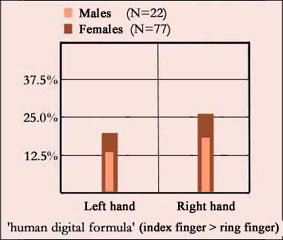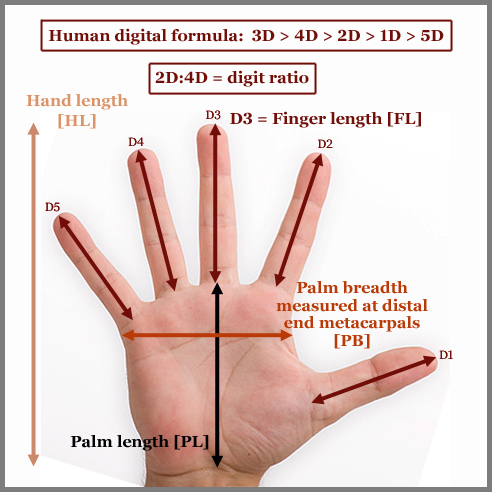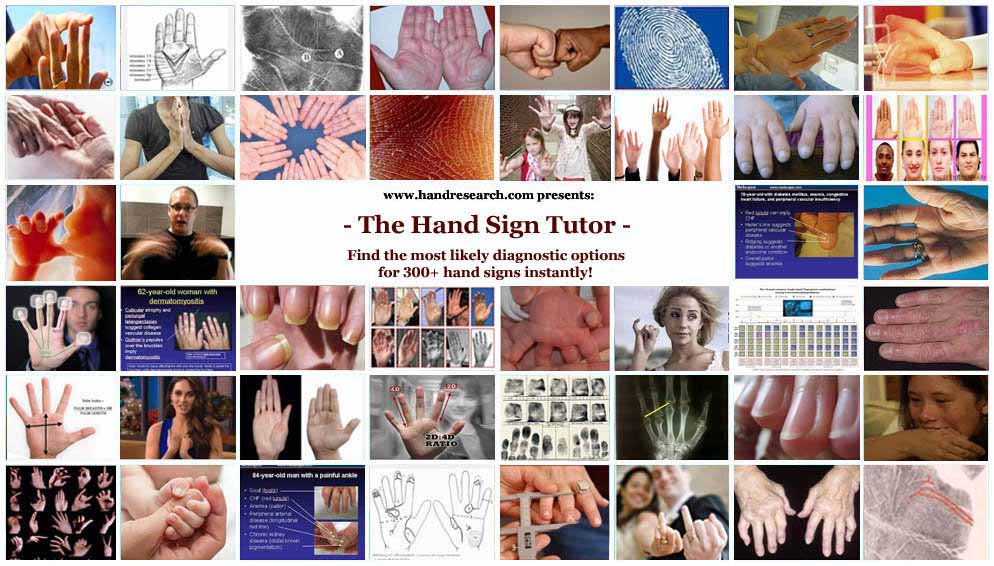The story behind the 'human digital formula':
Frederic Wood Jones introduced the concept of the so-called 'digital formula' in 1920 to demonstrate the typical characteristics of the hand. Jones suggested that in human hands the absolute length of the index finger is usually longer than the ring finger (human digital formula, 2D > 4D), whereas in apes the ring finger is longer than index finger (simian digital formula, 4D > 2D).
However, during the past 2 decades 2D:4D digit ratio studies around the world have revealed that Jones' observation was not entirely correct, see upper picture on the right (Dutch data).
For, even though the 2D > 4D can be described to represent a typical human hand phenomenon the truth is that in the majority of people (especially in males) around the world the absolute length of the ring finger [4D] is actually slightly longer than the absolute length of the index finger [2D].
For this reason the true 'human digital formula' (version 2.0) can best be described as follows (see also lower picture on the right):
Human digital formula 2.0: 3D > 4D > 2D > 1D > 5D
(Human thumb is usually longer than pinky: 1D > 5D,
while primates typically have 5D > 1D)
- Additional recommendations:
• 2D > 4D in a Dutch population
• Finger length proportions in 19 human populations + 23 primate species!
|
Human digital formula
according Wood Jones:

Human digital formula 2.0:

|


